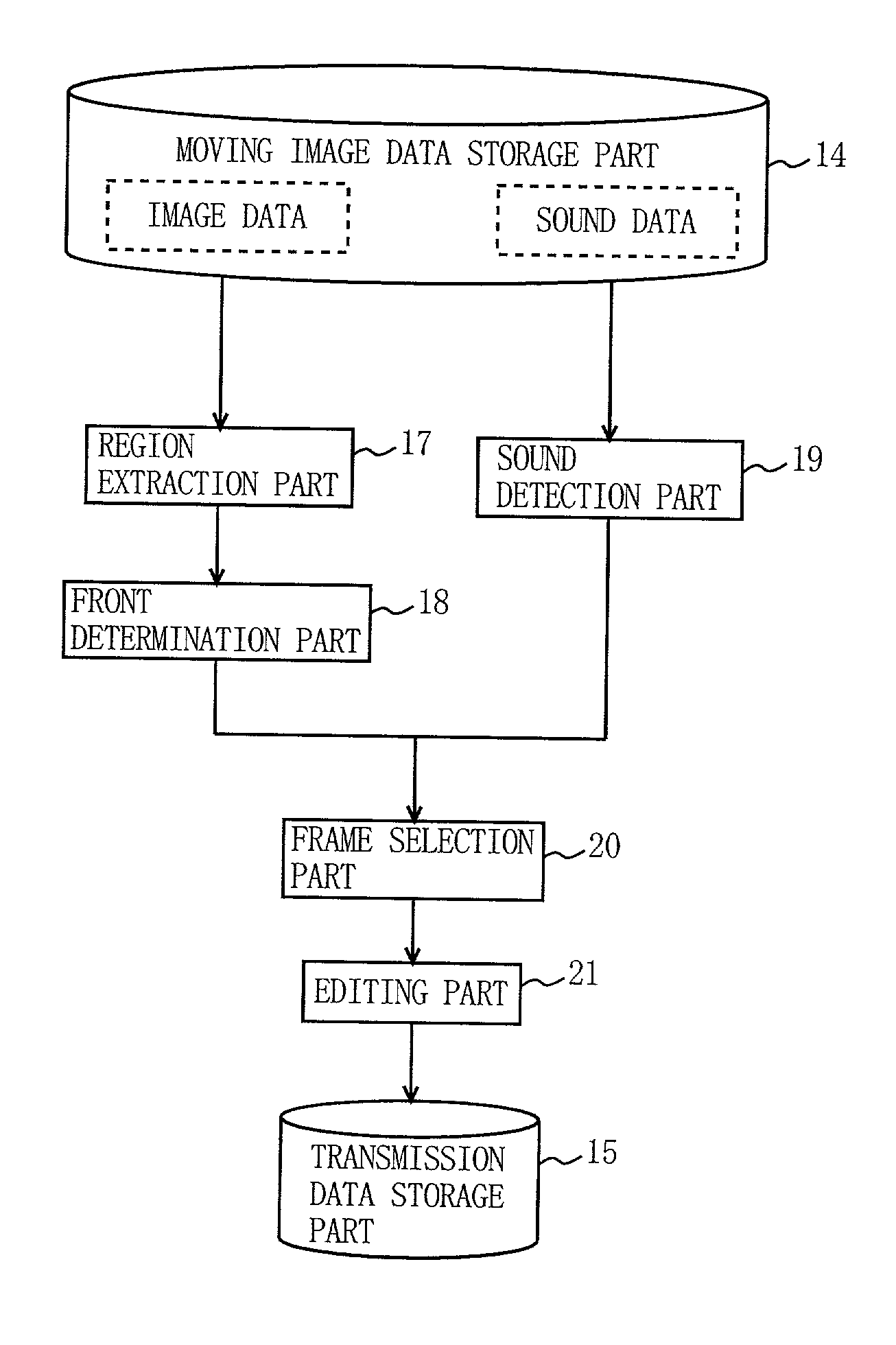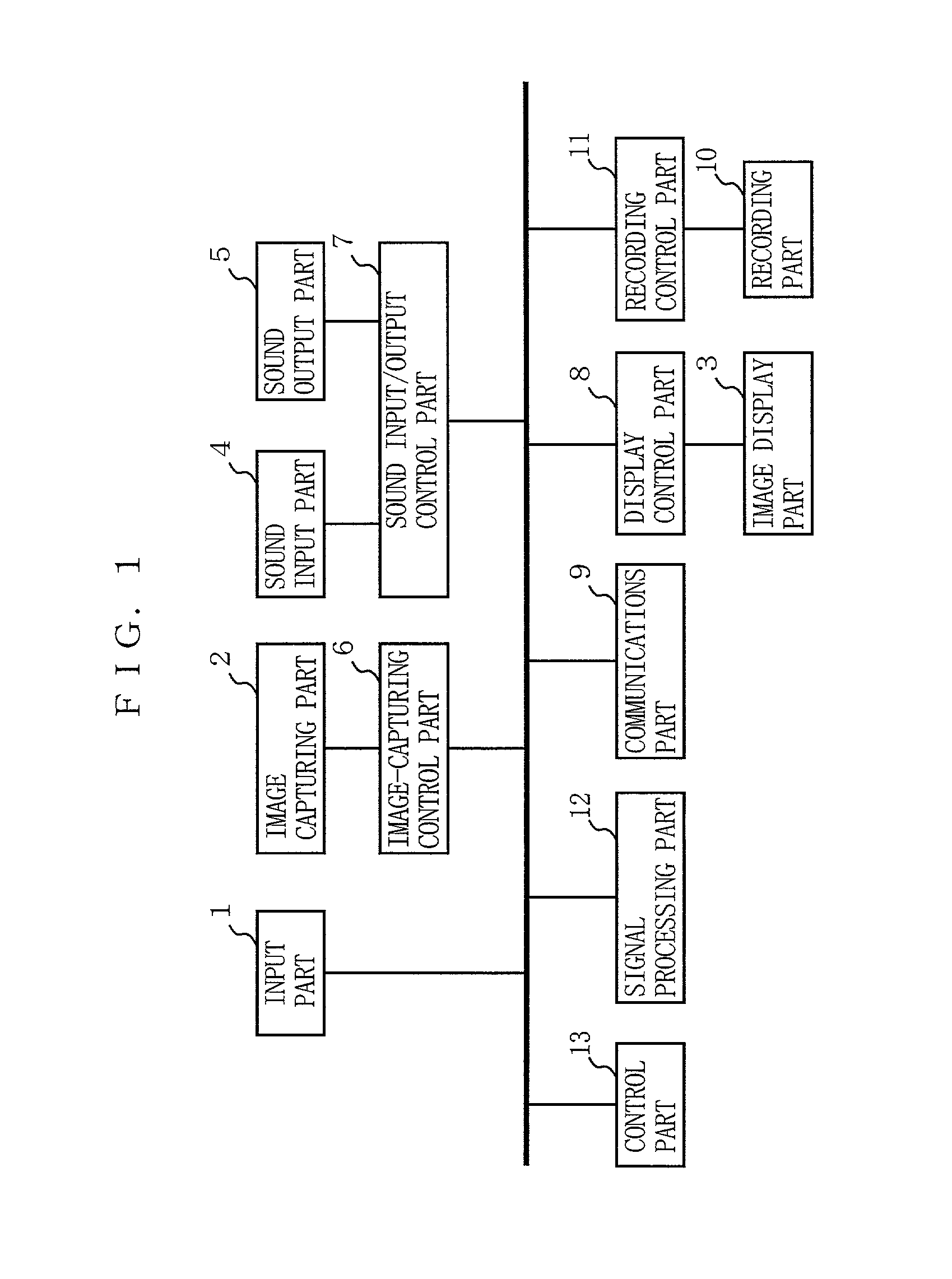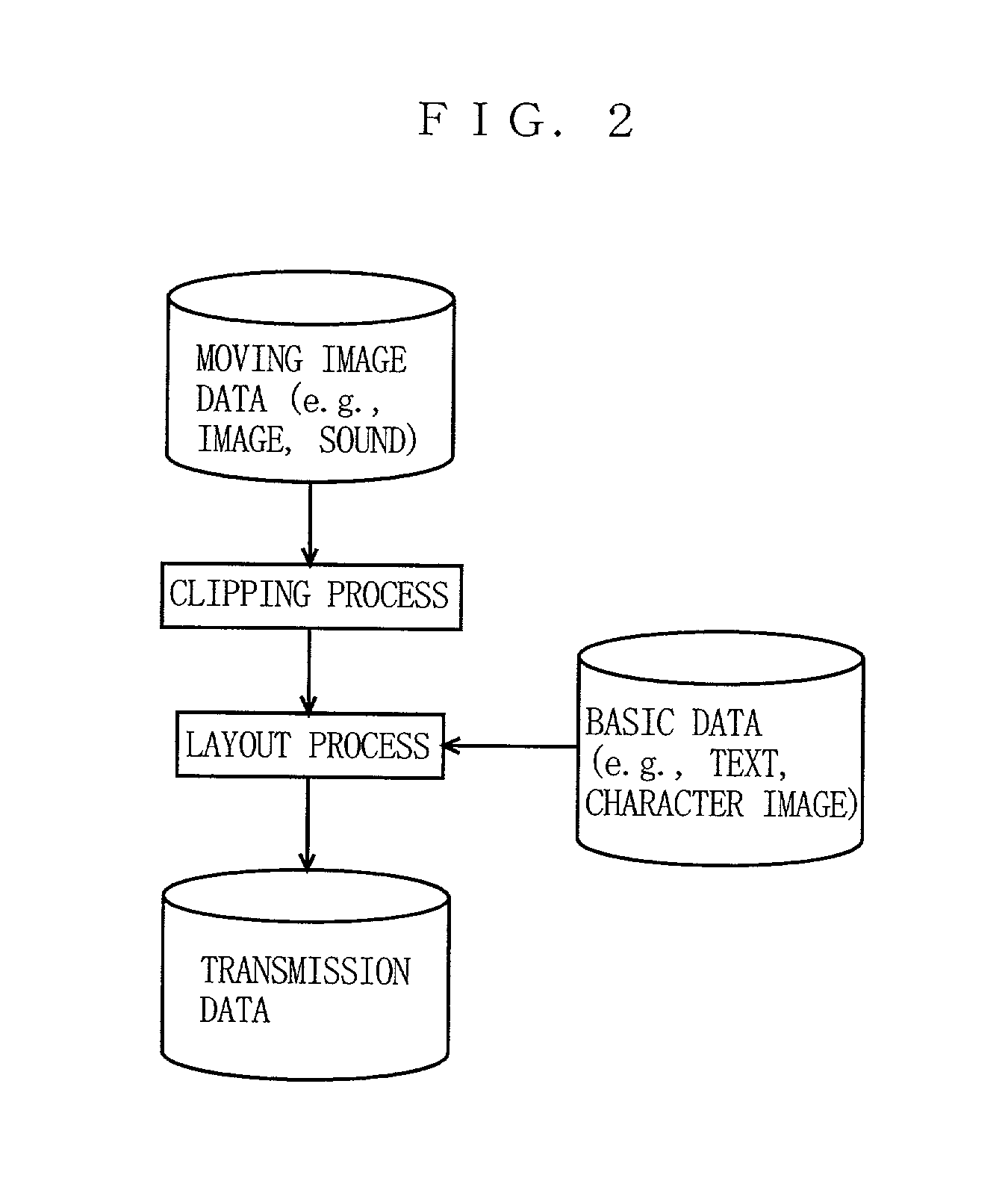Method and device for media editing
a technology of media and editing devices, applied in the field of media editing devices, can solve the problems of user difficulty or inability to do such clipping, cumbersome operation, and inability to leave messages using doorphones and visualphones, and achieve the effect of convenient editing
- Summary
- Abstract
- Description
- Claims
- Application Information
AI Technical Summary
Benefits of technology
Problems solved by technology
Method used
Image
Examples
first embodiment
[0073](First Embodiment)
[0074]A media editing device of a first embodiment enables the aforementioned clipping process of FIG. 2 in an automatic manner. FIG. 3 is a block diagram showing the functional structure of the media editing device of the first embodiment. In FIG. 3, the present media editing device includes a moving image data storage part 14, a transmission data storage part 15, a region extraction part 17, a front determination part 18, a sound detection part 19, a frame selection part 20, and an editing part 21. These constituents carry out entirely or partially the clipping process of FIG. 2.
[0075]The moving image data storage part 14 corresponds to the recording part 10 of FIG. 1, and stores moving image data recorded by the user as a message. The region extraction part 17 extracts, from the moving image data in storage, any specific region including entirely or partially the image of the subject (the user). The front determination part 18 detects whether or not the us...
second embodiment
[0107](Second Embodiment)
[0108]With a media editing device according to a second embodiment, the aforementioned trimming process is automated so that the resultant layout becomes well-organized, with efficiency, even for a small screen on the receiver end.
[0109]Described first is an assumable case in the present embodiment. Generally, any media to be transmitted in the form of videomail includes, not only moving image data, but information about who has sent the moving images with what title, for example. FIG. 6 is a diagram showing an exemplary screen display of a terminal receiving such a videomail. As shown in FIG. 6, on a display image 100, displayed are a moving image section 104, a header section 101 exemplarily indicating who has sent the videomail to whom with what title, a text section 102, and a decoration section 103 having decorations appropriately laid out.
[0110]To display such a display image of FIG. 6 on a small screen of a mobile terminal, the image is often reduced ...
third embodiment
[0125](Third Embodiment)
[0126]With a media editing device of a third embodiment, the trimming process is performed differently from the second embodiment, and the resultant layout displays any needed text together with moving images occupying a sizable proportion of the screen.
[0127]Described first is an assumable case in the present embodiment, specifically a case where the display image 100 of FIG. 6 is trimmed in such a manner that the moving image section 104 occupies a larger space, as much as possible, for display on a small screen (of mobile phone, for example). Here, presumably, information to be displayed on such a small screen is, at least, a “title”, “text”, and moving images. Actually, the small screen is fully occupied only by the moving images, and there is no space left for the title and text. FIG. 10 shows an exemplary display screen showing only the moving images.
[0128]Here, the present media editing device is similar in structure to that of the second embodiment. T...
PUM
 Login to View More
Login to View More Abstract
Description
Claims
Application Information
 Login to View More
Login to View More - R&D
- Intellectual Property
- Life Sciences
- Materials
- Tech Scout
- Unparalleled Data Quality
- Higher Quality Content
- 60% Fewer Hallucinations
Browse by: Latest US Patents, China's latest patents, Technical Efficacy Thesaurus, Application Domain, Technology Topic, Popular Technical Reports.
© 2025 PatSnap. All rights reserved.Legal|Privacy policy|Modern Slavery Act Transparency Statement|Sitemap|About US| Contact US: help@patsnap.com



